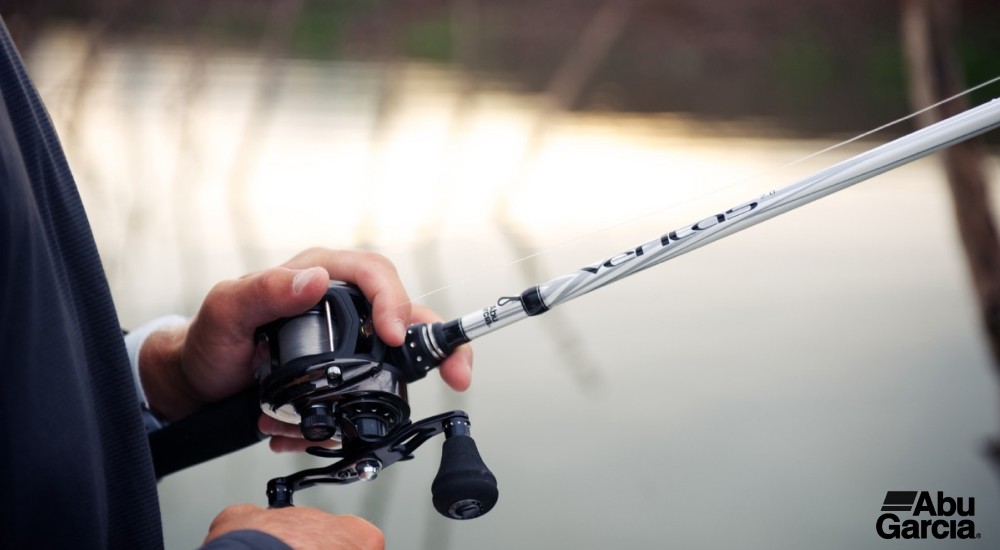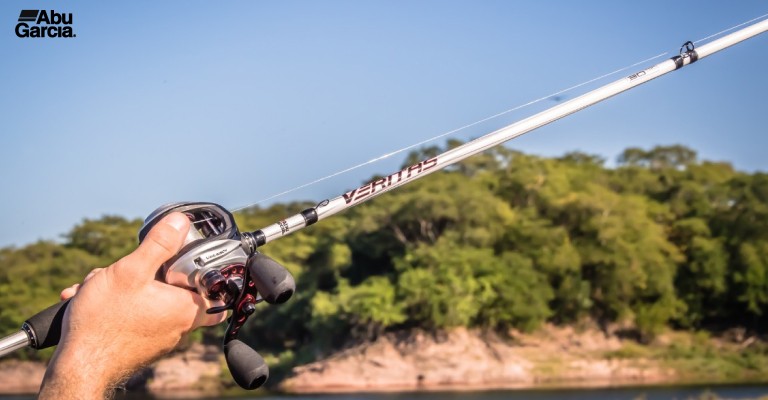Baitcasting Rods Explained

Many anglers love the challenge of fishing for walleye, bass, musky, or other larger game fish. If you’re after these species, you’ll want to consider using a baitcasting rod during your next outing. When choosing a new rod, there are several different factors to consider based on your application and target species. Our Fishing Experts highlight the basics of baitcasting rods including rod length, action, and power so you’re able to find the right rod for you.
What is a Baitcasting Rod?
A baitcasting rod pairs with a baitcaster reel allowing anglers to cast heavier baits. With a baitcasting rod, your reel sits on top of the rod and the rod guides face upward so that you have more power when reeling in larger, heavier species.
Baitcasting Rod vs. Spinning Rod: What’s the Difference?
Many new anglers wonder what the key differences are between a baitcasting rod and a spinning rod. One of our Fishing Experts, Mike, explains:
“One of the key differences between a spinning rod and a baitcasting rod is how your reel attaches to your rod. With a spinning rod, your reel will sit under the rod, while with a baitcasting rod, your reel will sit on top of your rod. Another difference is the direction your line guides face. On a baitcasting rod, the guides face up to reduce pressure and prevent them from popping off when fighting a large catch, while on a spinning rod, the guides face downward. With these key differences, spinning rods are better for handling the lighter baits, lighter line, and more finesse applications, while the baitcasting setup is ideal for heavier lines, heavier baits, and heavier cover applications. Ultimately, a baitcasting rod is built for those after the larger game fish, while a spinning rod is great for those looking for small to medium-sized game fish.”

Choosing Your Baitcasting Rod
There are three main features to consider when buying a new baitcasting rod: length, action, and power. Your target species determines what to look for in a baitcasting rod.
Rod Length

The larger the target species, the longer the fishing rod—this is a general rule for beginners to use when figuring out which length of rod to buy. Most anglers after species like pike and musky use a baitcasting rod between 8 and 10 feet because this length offers more strength, casting distance, and it pairs well with a variety of presentations. If you’re targeting smaller game fish like bass or walleye, many anglers choose an option between 6.5 and 7.5 feet. This length of rod offers more accuracy when casting and pairs well with the typical applications for attracting bass or walleye. Also, if you’re planning on fishing from a kayak, this length of rod is much more manageable when reeling in your catch.
Rod Action
Now that you know the range of rod length, the next feature to consider is the baitcasting rod’s action. The rod’s action refers to how much the rod bends. For example, a rod with a fast action will bend closer towards the tip compared to a rod with a moderate action that bends closer to the handle. For beginners, looking at fast or moderate action is a good place to start.
- Fast action rods are known for their versatility as they offer a good balance of sensitivity and faster hook sets for applications like jigging.
- Moderate action rods will absorb the fight of the fish more and are great when using crankbaits.
Rod Power
The final feature to consider is the rod’s power, which describes how much weight the rod is able to lift. With most baitcasting rods, the power can range from medium to extra-heavy. To help, our Fishing Experts offer suggestions in which rod power to try based on your target species.
| Target Species | Recommendation |
|---|---|
| Walleye | Medium to Medium Heavy |
| Bass | Medium to Heavy |
| Pike | Medium-heavy to Heavy |
| Musky | Heavy to Extra-heavy |
What Type of Fishing Line Should I Use?
Once anglers find the right baitcasting rod, a quick follow-up question is: what fishing line to use? It really depends on your choice of application.
- Braided line is a popular choice because it’s versatile no matter what presentation you’re casting. This type of fishing line can be used when casting a small lure all the way up to a large lure targeted for musky.
- Monofilament line is typically the choice when using techniques that require a bit of stretch such as using crankbaits or topwater fishing.
- Fluorocarbon line is a must-have in your tackle box because it can be used as either the main line or leader. This type of line is invisible underwater making it great for fishing in clear waters.
Plenty goes into finding the right baitcasting rod—length, action, and power, but by keeping your target species in mind, you’ll be able to narrow down your options and ultimately find the right rod for you. If you have additional questions, stop into your local ERLEBNISWELT-FLIEGENFISCHEN to speak with a Fishing Expert today!